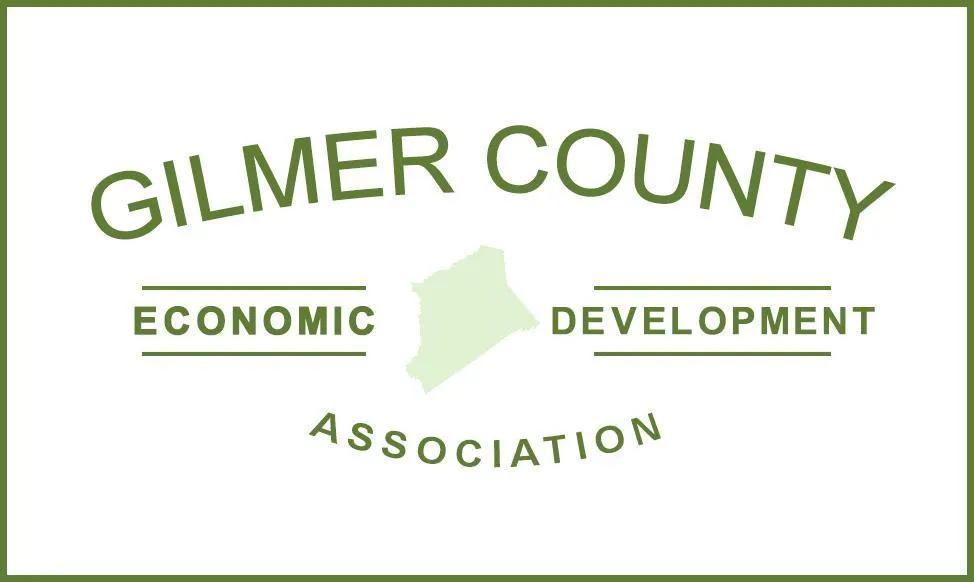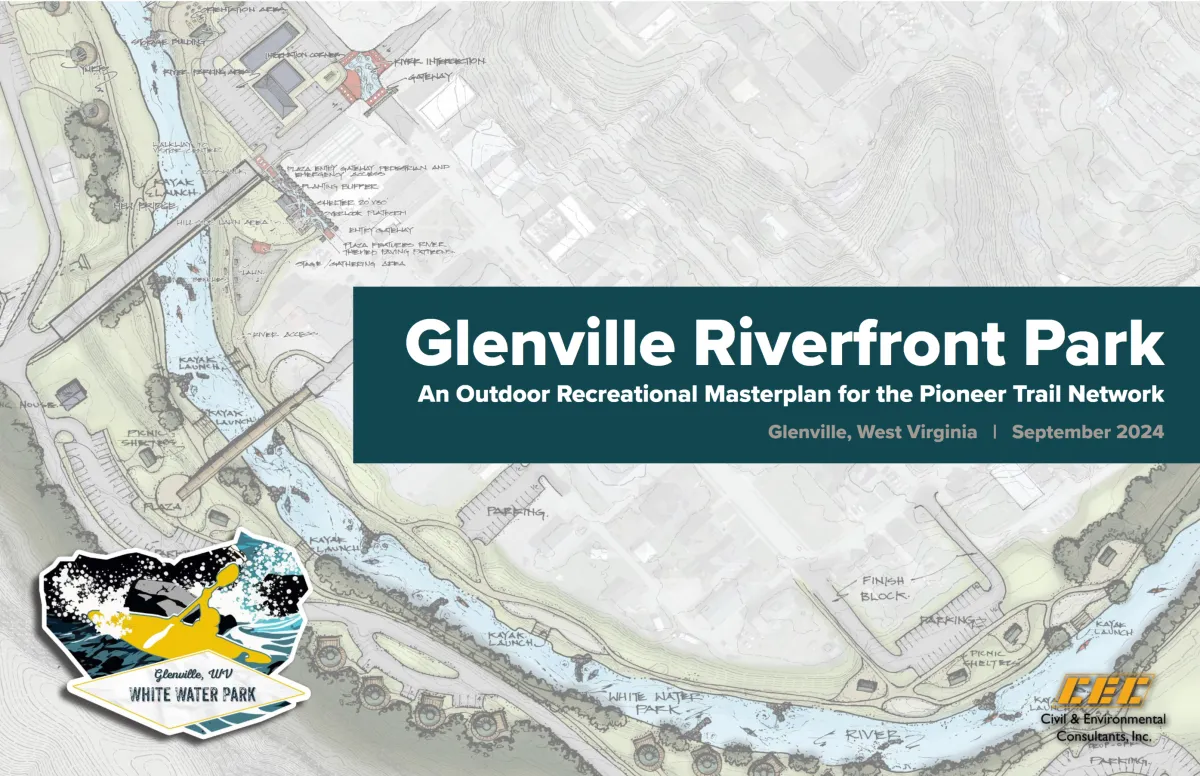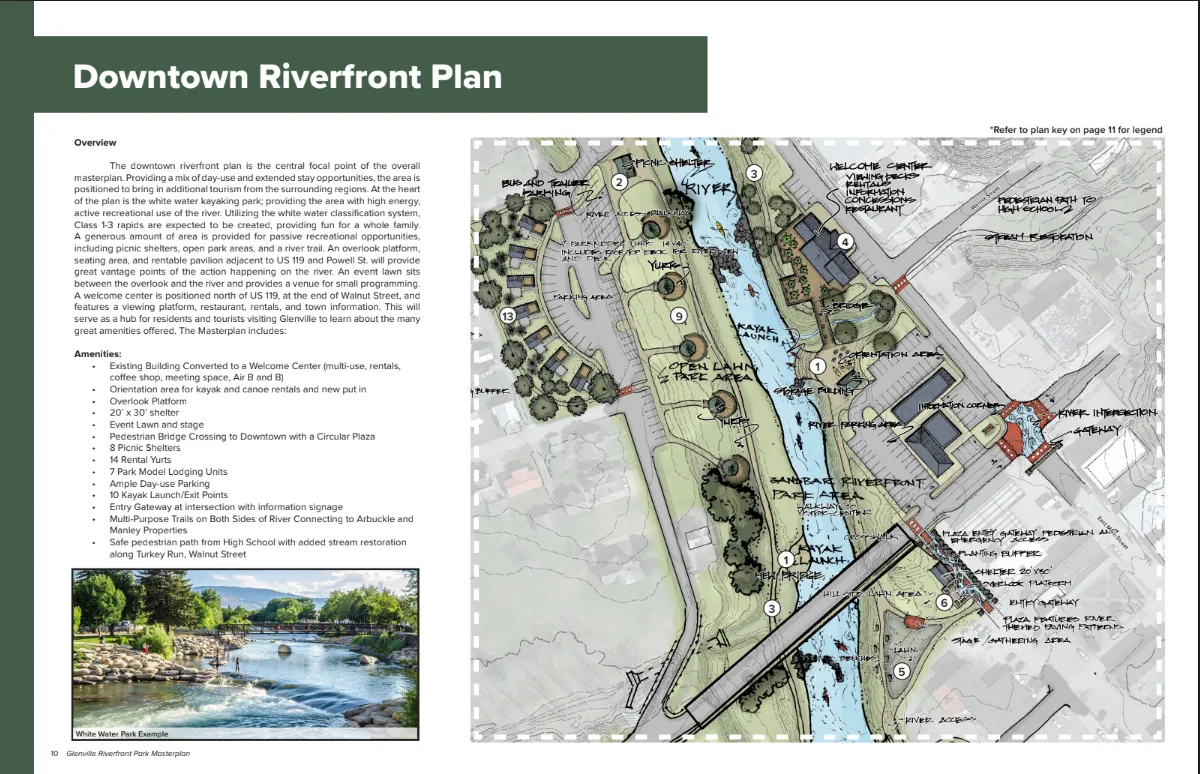Rural Partner Network (RPN) - Highlights West Virginia Tourism

Glenville River Front Park Master Plan
Executive Summary, Regional Conceptual Map, Master Plan
Plan Announcement/ Release
Statement and Description from Gilmer County EDA - Jeff Campbell
An Outdoor Recreational Masterplan for the Pioneer Trail Network
Visitors to WV directly spent more than $5 billion in 2022, an all-time tourism annual spending record, which had an overall impact of more than $7 billion throughout the economy, according to a report from Oxford Economics. WV’s tourism industry currently supports more than 54,000 jobs - one in 16 jobs in the state- and pays out close to $2 billion in total annual earnings. Visitors to WV spent more than $800 million on lodging in 2022, which includes short-term rentals through services like Airbnb. After a change in state law, short-term rentals recently began paying occupancy taxes after a change in state law. “It would be great to see our local mayors and county commissioners starting to receive revenue from implementation of the Glenville Riverfront Park Masterplan.” (said Jeff Campbell)
As the town of Glenville looked to the river basin that started its economic boom over 150 years ago, we now look to it for its future economic success. The Glenville Riverfront Park Masterplan aims to create a family-friendly whitewater park, lodging, hiking/biking trails, fishing access, commercial businesses, and day-use opportunities in the heart of downtown Glenville. With this masterplan, Glenville will spearhead the system to be known as the Pioneer Trail Towns development along the Little Kanawha River basin creating a vibrant, cohesive, and dynamic linkage through Braxton, Gilmer, Calhoun, Wirt, and Wood Counties as a driver for family-friendly recreation from Burnsville to Parkersburg, West Virginia. Strategically placing lodging amenities and recreational activities of various levels every 10-20 miles along the Little Kanawha River allows users to have multiple experiences (I.e. festivals, hiking/biking trails, shuttle services for river float trips, small-town Appalachian life, restaurants, and many more), providing the ability for extended stays with the region and provide economic development success to Glenville and the region as a whole.
Glenville Riverfront Park Masterplan has been developed to aid the town of Glenville and the county of Gilmer with economic development strategies and connections to other regional recreation opportunities by promoting the development of the Little Kanawha River and Glenville as a recreational hub. The development of the river corridor and connection to the surrounding region via river, trails, and road access will aid in increased tourism of the area and economic development of the downtown area of Glenville. This masterplan is to create a white-water kayaking park, hiking/biking trails, open park areas, picnic shelters, fishing access, and lodging. While many locations surrounding Glenville provide passive outdoor recreation activities, using the Little Kanawha River as a recreational backbone to provide the area with the only white-water park would help promote Glenville as must stay location for those who are seeking more active outdoor recreation activities in addition to hundreds of acres of hiking/biking trails. With over 265 planned rental opportunities, Glenville could be the centralized location for tourists to stay and venture outward for single-day trips to the surrounding region’s amenities.
Jeff Campbell
Pacific Yurts Explore Manuals, Materials & Floor Plans - Pacific Yurts
Recreation Engineering & Planning https://www.boaterparks.com/contact
Whitewater Parks & Riverside Design
Presentation Notes
Presentation notes and supporting information
Placemaking is a multi-faceted approach to the planning, design and management of public spaces. Placemaking capitalizes on a local community's assets, inspiration, and potential, with the intention of creating public spaces that improve urban vitality and promote people's health, happiness, and well-being. Wikipedia
Pioneer Trail Town Placemaking & Development
Fed by the Burnsville Lake, the Little Kanawha River features calm flat water with small rapids dotted along the way. After the Burnsville Dam, the river flows through the counties of Lewis, Braxton, Gilmer, Calhoun, Wirt and Wood Counties, gathering water along the way from numerous creeks and streams passing the communities of Burnsville, Stouts Mills, Sand Fork, Glenville, Grantsville, Big Bend, Creston, Burning Springs, Palestine, Elizabeth, and Newark, to its mouth at the Ohio River in Parkersburg. The River offers incredible fishing opportunities as well!
What kind of fish are in the Little Kanawha River?
Game fish occurring are largemouth and smallmouth bass, rock bass, bluegill, sunfish, walleye, Saugeye, Sauger, crappie, muskellunge, channel catfish, flathead catfish, long-nosed gar, and carp.
Pioneer Trail Town Placemaking & Development
North Central WV’s recreation is an untapped resource. Recreation as the destination is the catalyst for change in the economy, to the health and growth of our community in the rural areas of the Pioneer Trail Network. The Little Kanawha River and its meandering mellow stream create a linkage through Braxton, Gilmer, Calhoun, Wirt, Wood counties and a family destination. Unlike the WV Whitewater Rivers, this river is family friendly and allows for users of all ages and abilities to safely navigate/recreate throughout the system. Each county or community has an opportunity to create recreation related business such as rental shops, restaurants, commercial and lodging as well as highlighting local artisans, musicians and each town’s unique history. Look at the Glenville Riverfront Park as the spearheading of a larger system. Glenville is strategically located within fifteen minutes of an interstate, has a college and can be linked easily to a WV State Park in Cedar Creek. Creating a recreation opportunity in an area with attractions already in place, allows for success early on and then can be replicated throughout the system.
We see not only water access but lodging opportunities, festival grounds and likeminded businesses. By having a 169 mile system (that does not take in to account all of the navigate streams that feed the LKR), a family has the opportunity to float, ride or hike throughout the region which creates a system that families can explore over and over again. I can see how we have lodging (RV’s, primitive camping, yurts, etc.) strategically placed every 10-20 mile along the river so that the system allows for users to have multiple experiences along the way. Many of the lodging opportunities will be located near existing communities which allows for locals to create lodging businesses or businesses directly related to hospitality. As a region, a brand that is followed is the key. Signage, logos and shared marketing will benefit the area. Shuttle services for trail users would allow for the users to hike, ride or float throughout the system and have a shuttle that would take them back to their original starting point.
In addition to the development of localized trails that link to the larger system, additional opportunities such as a fishing map with marketing should be created. We see as part of our work given the impact of outdoor recreation will have on these communities is support in small business development and entrepreneurship. Working with all those communities along the Little Kanawha River Trail System to help generate new businesses to serve the numbers of tourists that will come into the area. The system has an opportunity with the two major interstates connecting to each end of the trail system. This allows for easy access from east and west along with existing regional drivers such as the Elk River and Burnsville Lake to the east and the Ohio River to the West. Another thought, looking at it as a rural regional system and broadband. Having a system that has either internet or phone access maps so that users know when they arrive where to expect to have service and not. This will allow outside visitors to have comfort in knowing that they will be able to access maps or calls when needed and this would all be a part of the branding on a regional level especially as we combine Little Kanawha River Trail along with the Elk River Trail development under the Pioneer Trail Towns name.
Looking forward to developing our current communities in to “Pioneer Trail Towns” Making recreation the destination.
Thanks for your time,
Jeff Campbell
President GCEDA
Pacific Yurts Explore Manuals, Materials & Floor Plans - Pacific Yurt
Recreation Engineering & Planning https://www.boaterparks.com/ontact

